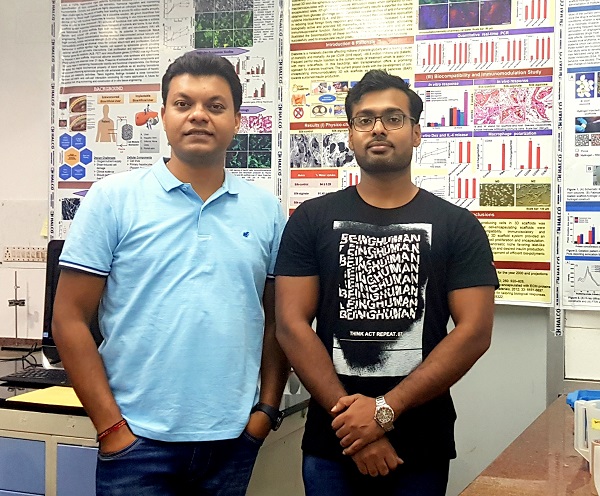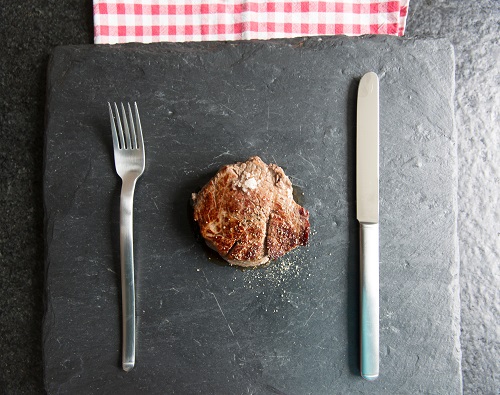IIT Guwahati’s Biomaterial and Tissue Engineering Laboratory has found a novel method to produce lab-grown meat.
Meat alternatives have definitely caught people’s attention in recent times. Whether it’s the hunt for climate-friendly food or just curiosity, consumers are willing to try meat, that’s not meat. But what about meat, that is still meat, just not accompanied by all the environmental consequences of producing it?
IIT Guwahati’s Biomaterial and Tissue Engineering Laboratory has come up with a novel technique to synthesize meat from muscle progenitor cells, isolated from animals. The cells are then grown on an edible material, constitution of which is patented. Led by Dr Biman B Mandal, the team developed a method that can be tailored to yield lean and fatty meat products and meat products in various shapes.
In a written statement, the laboratory said that the preparation used to grow the meat restricts the use of external chemicals like animal serum, hormones, growth factors and antibiotics, making this a safe and natural product. Also, the use of edible components in the support matrix makes it possible to improve the nutritional content of the meat product. When scaled up using bioreactors, this method can yield, for example, the meat 100 chickens using just one chicken.
Considering that 4000 litres of water is required to produce 1 kg chicken meat and 1 kg of mutton meat requires about 8000 litres of water, the implications of this new technique can be massive in saving resources and the environment.
IIT Guwahati's Biomaterial and Tissue Engineering Laboratory has found a novel method to produce lab-grown meat. Click on the link below to know more. Click To Tweet“As a responsible society, we should look into aspects where we can develop alternative technologies to minimize killing or cruelty to animals while sourcing our meat supply. Further, growing farmland animals as a meat source requires enormous natural resources,” said Dr Mandal in a statement to TYT. “What if, similar quality of safe meat, including taste can be achieved using tissue engineering technology? In this technique, we use animal cells to create ‘cruelty-free’ meat, that too using minimal natural resources and not harming the environment or animals themselves.”
Of course, taste is a critical component here, and an essential part of consumer acceptance. Dr Mandal shared that the team hopes to not just mimic the taste of natural meat, but also introduce flavours that would help to tailor this process to consumer needs. “This process may enable the fortification of nutrients into the meat to deal with various deficiencies. This is not possible using conventional methods and livestock,” he said.

This new technique comes at the right time when numerous reports have highlighted the impact of our food system on the environment. In October 2018, Nature published a study called ‘Option for keeping the food system within environmental limits‘. This report outlined the need for changes in our diets to ensure we limit the amount of GHG emissions. Suggestions included moving towards a more plant-based diet and finding ways to reduce food waste. Similarly, the Eat-Lancet Commission’s report ‘Food in the Anthropocene,’ called out for ‘win-win’ diets that benefit human health and the environment. Again, the report emphasized increasing the consumption of plant-based foods and reducing the intake of animal-based foods, refined grains, highly processed foods and sugar.
The most recent entrant to this conversation is the Intergovernmental Panel on Climate Change – IPCC’s report on Climate Change and Land. This report highlights that about a quarter of the greenhouse gas emissions come from land use, with rice and ruminant livestock being significant contributors.
It seems like the way through this, is to reduce animal – based food intake. While these reports highlight the immediate need for a drastic change in diets, such changes are not that easy to come by, especially with the current increase in meat consumption owing to rising disposable incomes. Considering this fact, investing in alternative techniques is paramount, said Dr Mandal. “Our population is ever-growing. Thus we should invest and develop alternative avenues for meat-based products as we may not be able to meet the growing demands using conventional sources in the future.”
Image Courtesy: IIT Guwahati
Featured Image: Pexels.com
You May Also Like:
Crickè- UK
